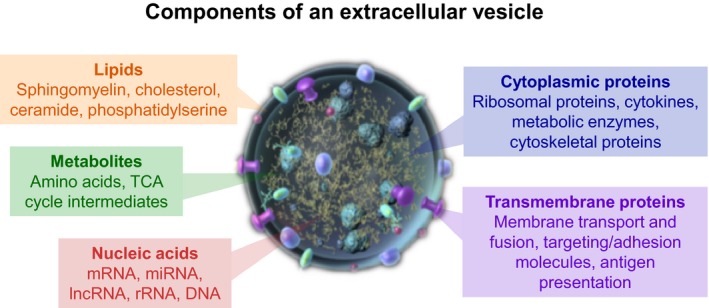Figure 1.

Extracellular vesicles (EV) are composed of a variety of cellular components. The EV membrane comprises lipids such as sphingomyelin, cholesterol, ceramide, and phosphatidylserine. Early metabolomic studies have shown that EV contain various amino acids and tricarboxylic acid cycle (TCA) intermediates. Nucleic acids, particularly RNA species such as mRNA and miRNA, have been consistently detected from EV. DNA has also been detected from EV; however, it is still unclear whether they are found inside the EV compartment. Extensive proteomic analyses have shown that EV are abundant in cytoplasmic and transmembrane proteins such as enzymes, cytokines, proteins for membrane transport and fusion, as well as molecules for targeting and antigen presentation. In addition to this, tetraspanins such as CD9, CD63 and CD81 are frequently identified proteins in EV, and are commonly used as markers for detecting EV.
